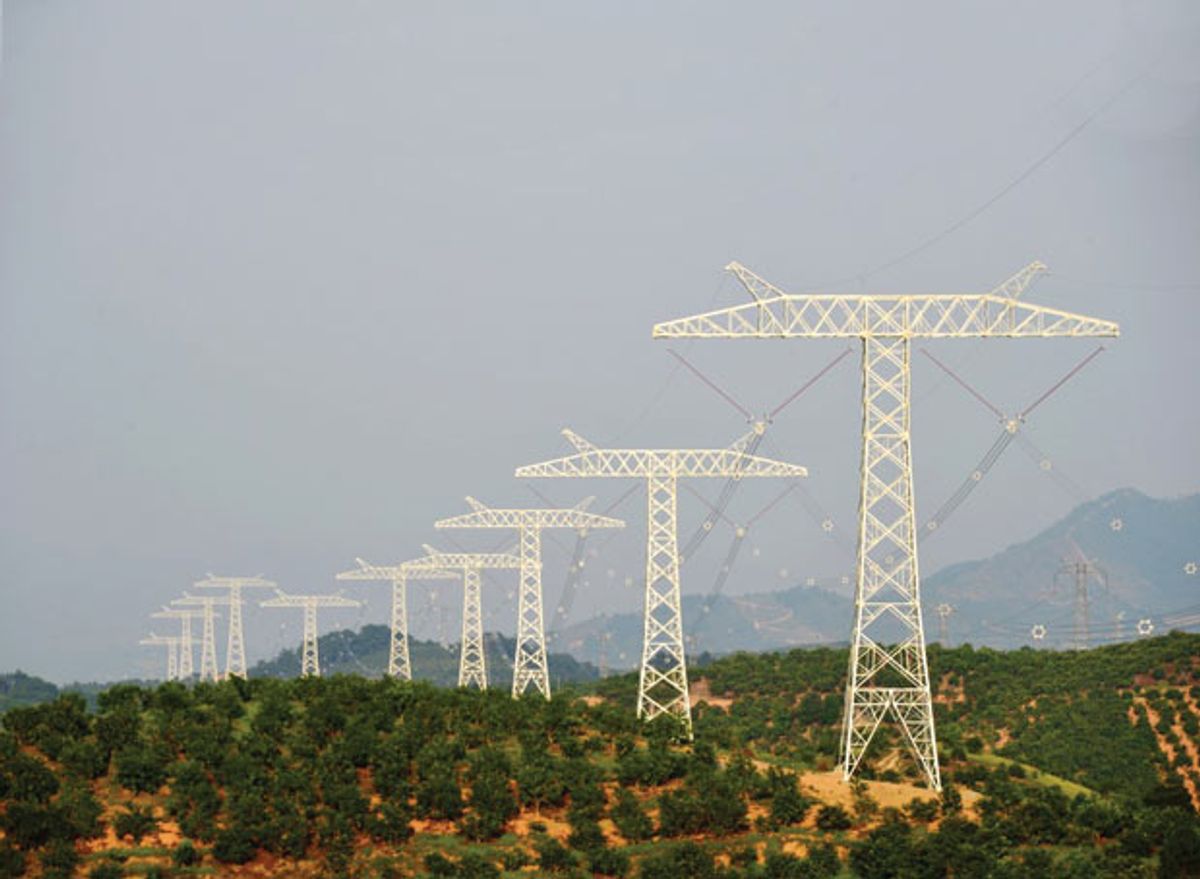Throughout the 20th century,utilities merged transmission systems with neighboring grids, creating ever-larger AC electricity grids. Some, such as Europe’s and North America’s, now approach continental scale. But a recent move in China to break up an AC grid suggests that growing use of DC transmission technology may turn back the clock.
Grid operators have synchronized their AC power grids with neighboring systems to take advantage of electricity trading opportunities and mutual support. When a storm knocks out a high-voltage line or power station, for example, larger AC grids offer the resources and electrical inertia to absorb the loss.
However, a DC-power comeback has been brewing for decades, spurred on by advances in solid-state power electronics. Solid-state conversion between AC and DC has enabled high-voltage direct current (HVDC) transmission lines that move electricity farther and more efficiently than AC lines. And, when paired, “back-to-back” DC converters allow the electrical exchange of power between nonsynchronized AC grids.
No country has gone as far with HVDC as China has. It operates more than 20 HVDC lines that deliver hydro, coal, and wind power from the nation’s interior to its eastern megacities. In southern China, five HVDC lines carry about 26 gigawatts of hydropower from mountainous Yunnan province to the coastal factories of Guangdong, meeting more than one-quarter of that province’s electricity demand.
It was this concentration of HVDC transmission that prompted the regional grid operator, Guangzhou-based China Southern Power Grid Co. (CSG), to take an unprecedented step: breaking up its AC grid.
Before last July, Yunnan and Guangdong were the western and eastern flanks of a CSG grid that served 248 million people living and working in a million-square-kilometer area. It was one large AC zone, augmented by HVDC lines, and it worked. System reliability was consistently improving, according to Mo Weike, a CSG control center engineer pursuing a Ph.D. at South China University of Technology, in Guangzhou. However, says Mo, the hybrid AC-DC system harbored a “unique risk” of systemwide blackouts.
Essentially, the HVDC lines converging on Guangdong were too big for the AC grid. When an HVDC line from Yunnan tripped off-line, up to 6.4 GW of power instantly surged onto the underlying mesh of AC lines. To counter this, CSG used preprogrammed security schemes to quickly reduce output from Yunnan.
But if those countermeasures had failed, the AC lines could overload and disrupt the electronic power switching in other HVDC converters. The latter threatened to knock more transmission off-line and collapse the entire CSG grid.
In July, CSG neutralized this threat by shutting off Yunnan’s AC links to the rest of its grid, turning the province into its own distinct synchronous zone. Power exchanges continue between Yunnan and the rest of the CSG grid (in fact, they have increased since July) via the HVDC lines and newly built back-to-back HVDC links on Yunnan’s eastern border.
CSG’s breakup marks the first reversal in AC’s inexorable expansion trend in over 40 years, according to international power experts. “I haven’t heard of anyone splitting grids in that way,” says Ian Dobson, an expert in grid stability at Iowa State University. But such compartmentalization could become a trend, according to Dobson and others. An optimization study that Dobson coauthored in 2014 suggested that, for the biggest grids, AC connectivity is a net liability in terms of reliability.
What’s more, says Gregory Reed, a DC expert at the University of Pittsburgh, HVDC can act as a firewall against cascading failures such as the Northeast blackout, which plunged 50 million people from Ontario to New Jersey into darkness in 2003. CSG’s AC breakup, he says, is pointing the way toward more resilient power systems. “They are doing what we should have embarked on in the [United States] and Canada a long time ago. Our AC synchronous networks are huge—way too large, in my opinion.”
CSG’s experience could also accelerate a shift toward more resilient HVDC technology. Southern China’s big HVDC lines overpowered its AC grid partly due to its thyristor-based converters, which require voltage support from the AC grid. CSG expects future HVDC projects to make greater use of newer, transistor-based voltage-source converters (VSCs), which manage their own voltage. VSCs are already favored for lines carrying the variable power produced by wind and solar farms. [See “Germany Jump-Starts the Supergrid,” IEEE Spectrum, May 2013.]
CSG installed VSCs in its Yunnan-Guangxi back-to-back station. It is now considering them for the second stage of its AC breakup plan: cutting off eastern Guangdong from the main grid.
Mo says the timing of that move will depend, in part, on how the Yunnan desynchronization experiment pans out. Its biggest challenge is balancing Yunnan’s AC supply and demand in real time, and thus keeping the grid frequency locked to its 50-hertz standard.
CSG has made it work so far, says Mo, by reprogramming Yunnan’s HVDC converters to lean on the larger CSG grid for help. Yunnan’s converters track the regional grid’s AC frequency and modulate its exports accordingly. When Yunnan has excess power, the overage is shunted to the larger CSG grid (and vice versa). But it is a balancing act that will grow only more challenging as the region installs more wind and solar power.

